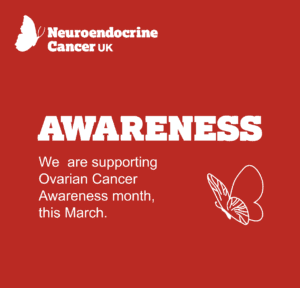 Ovarian Neuroendocrine Cancer – The Facts
Ovarian Neuroendocrine Cancer – The Facts
The incidence of temporary amenorrhoea or early menopause due to cancer or its treatments varies according to the age, pubertal status, existing ovarian reserve and type of cancer and/or treatment.
The risk of menopause increases with age, most likely because older women have decreased ovarian reserve compared to younger women. At birth, the ovaries contain approximately 1 million primordial follicles. With ageing, this supply of oocytes naturally diminishes (atresia) until there are <1000 oocytes remaining at menopause.
Cancer and/or its treatment can affect the ovaries : surgery – by removal, chemotherapy and/or radiation treatment by impairing follicular maturation or increasing the rate of oocyte loss.
This can result in the development of amenorrhoea which may be temporary (with a variable degree of recovery) or permanent (premature/early menopause). Return of menses does not necessarily mean return of fertility.
Given increases in incidence, prevalence and prognosis Angela Lamarca’s talk at ENETs 2021 – highlighted the importance of onco-fertility discussion in the Neuroendocrine Cancer population – and the limitations in available information re Neuroendocrine Cancer specific treatment consequences.
To find out more about Ovarian Neuroendocrine Cancer click here.
#NeuroendocrineCancer #NETCancer #NeuroendocrineCancerUK #NeuroendocrineCancerAwareness #OvarianNeuroendocrineCancer #OvarianCancer #OvarianCancerAwareness
